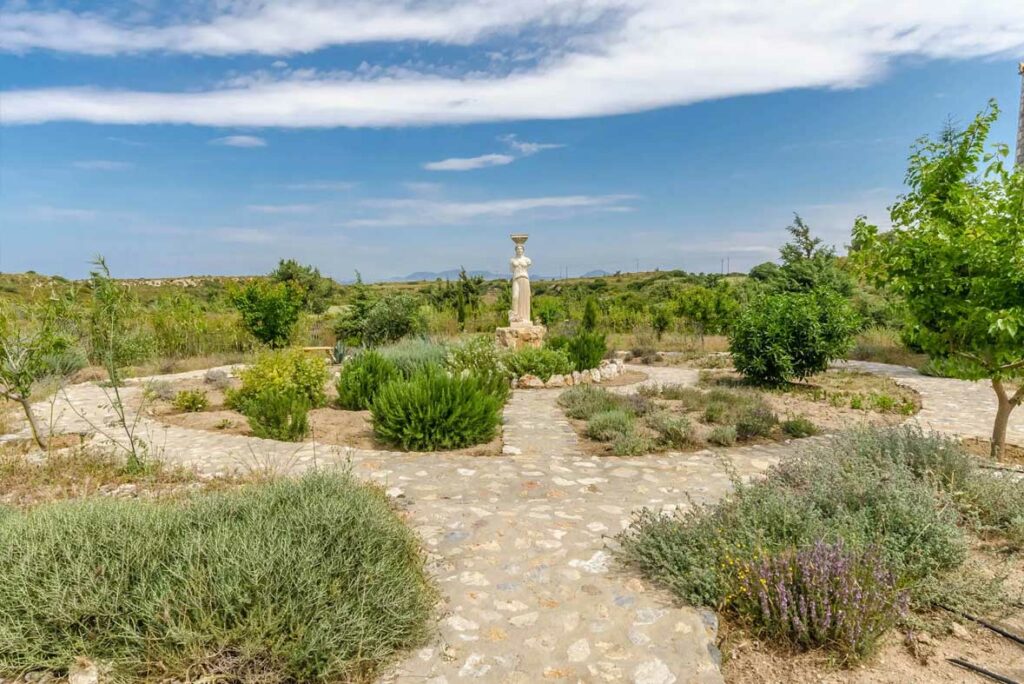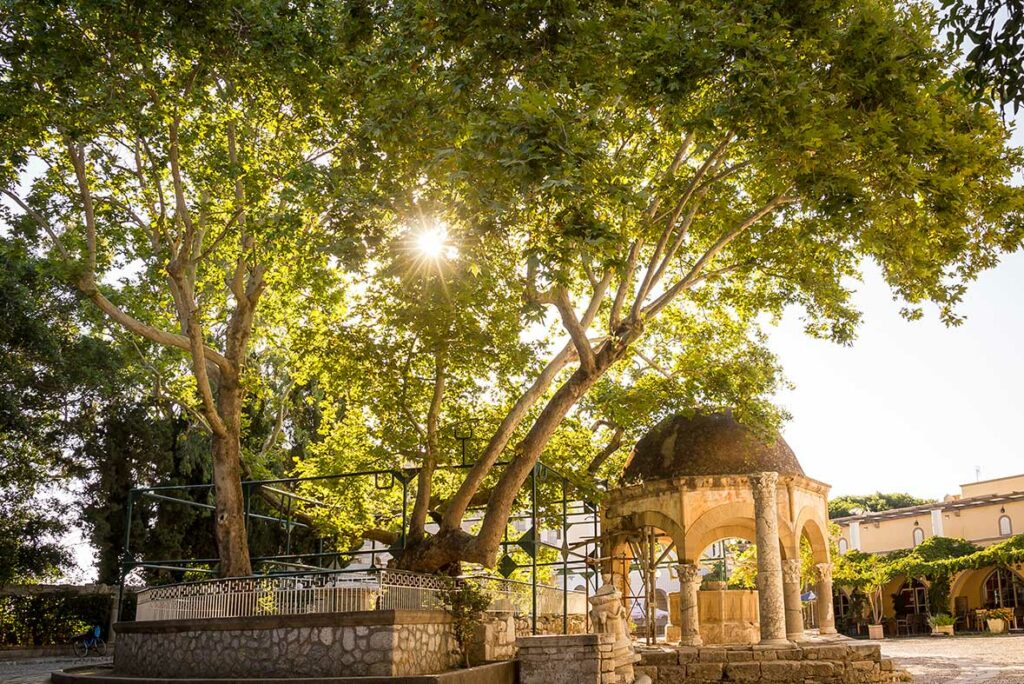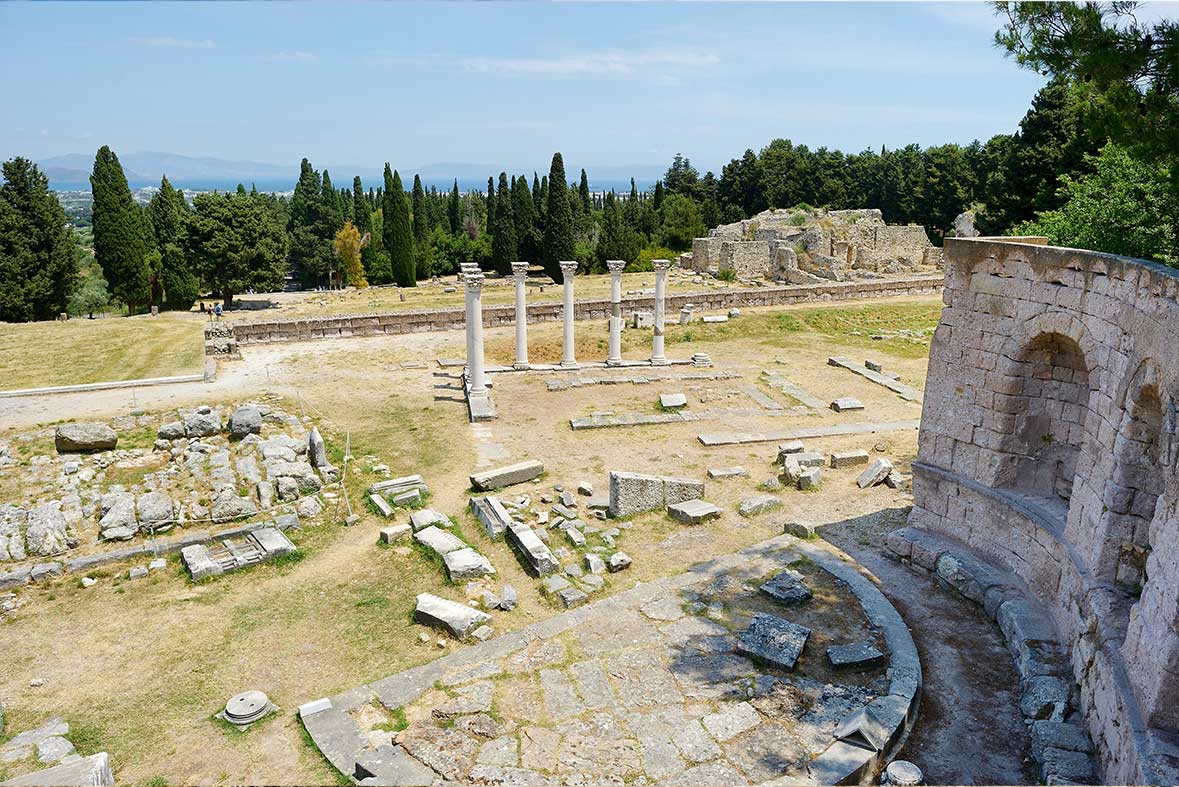The Island of Hippocrates: God of Medicine
Hippocrates, the father of modern medicine, was born in Kos around 460 B.C. A contemporary of Sophocles, Socrates, and Democritus, Hippocrates eschewed superstition in medical practice, emphasizing the importance of diet, fresh air, healthful waters, physical exercise, climate, and healthy living.
According to David H. Newman, MD, director of clinical research at the Department of Emergency Medicine, Mount Sinai School of Medicine, and author of “Hippocrates’ Shadow: Secrets from the House of Medicine,” Hippocrates believed “that it was impossible to understand illness without understanding the whole person.”
Kos embodies Hippocrates’ recommendations for a healthy environment, as detailed in his treatise “On Airs, Waters, and Places.” Highlighting some of the main ideas in the introductory part of the thesis, whoever wishes to investigate medicine properly should consider the following:
- The seasons and the distinct effects each brings, as they vary significantly in their impact;
- Types of winds, both hot and cold, common to all regions, as well as those that are unique to specific localities;
- Water quality, as it may differ in taste and overall characteristics (chemical composition);
- Geographical orientation of a city, noting how it is positioned in relation to the winds and the path of the sun, as this positioning can have a considerable influence;
- Water sources utilized by the inhabitants, considering whether they are marshy or hard and if they are suitable for consumption and cooking;
- The lifestyle and habits of the residents, including their dietary preferences, level of physical activity, and overall approach to leisure and work.
His approach to therapy has become part of a tradition that the Koans diligently uphold even 2,500 years later.
Must-see Hippocrates Attractions on Kos Island
Kos is a secluded haven covering 124 square kilometres, adorned with sandy beaches, fertile plains, and rugged mountains in the Aegean Sea, approximately five kilometres from the Turkish coast and 225 kilometres southwest of Athens. No visit is complete without a walk in the footsteps of the father of medicine, and these are the top Hippocrates attractions on the island.

Hippocrates Garden: The Ancient House- Hippocrates Garden cultural centre replicates an ancient Greek settlement from the 5th century B.C. During their visit, guests will familiarize themselves with the ancient Greek way of life during the time of the renowned father of modern medicine. The entire complex includes an authentic reconstruction of a house from that era, a Philosopher’s Arcade, the Dancing Satyr’s Theater (built from stone, with a capacity of 80 persons), Goddess Demeter’s Museum showcasing a collection of ancient farming tools, the stoa of Abaton or “Enkoimeterion” (incubation hall, where patients were cured, through the contact with the healing god Asklepios), the Temple of Apollo, an altar, and the Eros Vineyard.
Operating from April to November as a museum, the centre hosts philosophical seminars and ecological retreats centred around the healing practices derived from our ancient Greek medical heritage.
International Hippocratic Foundation of Kos: Established in 1960 as a tribute to Hippocrates, the Father of Medicine, by the late Professor Spyridon Economou, former Professor of Urology at the National and Kapodistrian University of Athens, the foundation aims to propagate the timeless ideals of Hippocrates to a global audience. The foundation is nestled east of the Asclepeion and occupies an expansive 380,000 square meters of land. The edifice comprises a stately conference hall, an impressive exhibition hall, and well-appointed research offices.
A meticulously curated museum awaits visitors, displaying a select yet profound array of exhibits pertaining to Hippocrates, including a modest yet compelling display of medical instruments. The sprawling grounds also boast the enchanting Hippocratic Botanical Garden, which houses a diverse array of medicinal herbs indigenous to the Greek flora, as chronicled in the revered works of Hippocrates. At the end of an alley lined with cypresses, you will discover the magnificent Hippocratic Altis statue crafted by sculptor Nikos Ikaris in 1988, which depicts Hippocrates holding a snake in each hand.

Plane Tree of Hippocrates: Standing proudly in the heart of Kos town for an astonishing 2400 years, Hippocrates’ tree is a remarkable sight. This ancient and majestic plane tree has weathered the passage of time, its hollowed-out trunk supported by metal scaffolding to ensure the safety of those passing beneath its sprawling branches.
Although the original oriental plane tree (Platanus orientalis) may have vanished, recent DNA research conducted by the Smithsonian’s Laboratories of Analytical Biology in the USA suggests that the existing tree, likely planted in 1776, could be a direct descendant of the one planted by Hippocrates of Kos himself between 2500-3000 BC.
Local lore maintains that the current tree is indeed a descendant of the original, a belief that science has yet to confirm or refute. Cuttings from the tree’s DNA, meticulously analyzed by scientists, have been distributed to esteemed institutions worldwide, perpetuating the enduring legend of the Tree of Hippocrates.
Regarded as a symbol of medical knowledge and instruction, the Tree of Hippocrates in Kos is steeped in history and significance. This venerable Oriental plane tree boasts a crown diameter of approximately 12 meters (40 feet), solidifying its status as the largest plane tree in Europe.
Asclepieion: Surrounded by lush pine and cypress trees, the Asclepieion stands as one of the most renowned landmarks on the island of Kos. This ancient site served as the teaching grounds for Herodicus, who imparted his medical wisdom to the legendary Hippocrates.
Unearthed and attributed to the German archaeologist Rudolf Herzog in the early 20th century, the Asclepieion owes its rediscovery to the unwavering dedication of Koan historian Iakovos Zarraftis. Extensive excavation efforts from 1902 to 1904 revealed most of the sanctuary’s remains.
Dating back to the Hellenistic era, the surviving ruins of the Asclepieion primarily represent the 4th century B.C. Unfortunately, the construction materials from this historical site were repurposed over time, notably contributing to the construction of the Kos Town Fortress and the Mosques at the Lotzia and Eleftheria squares.
Amidst the verdant backdrop of pine and cypress trees, the Asclepieion boasts a breathtaking panorama, offering a stunning view of the Turkish shores across the expanse of water on clear days.

